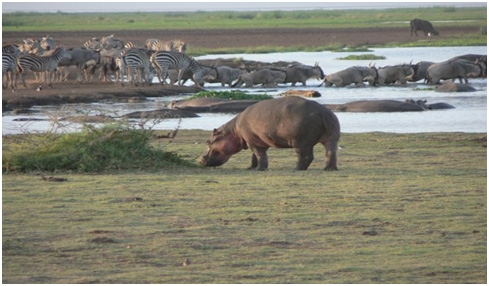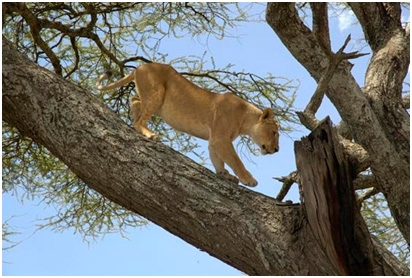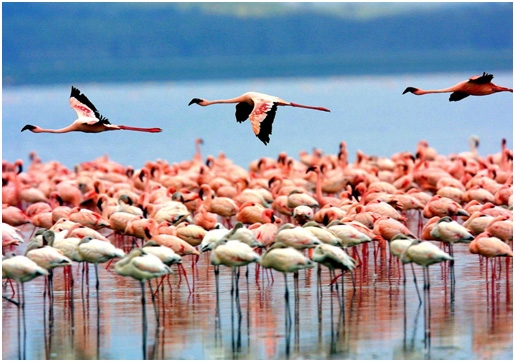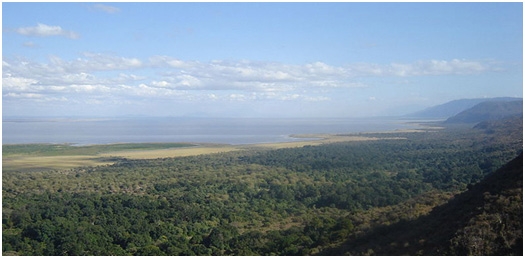Size: 127 sq. miles
Location: 80 miles west of Arusha city.
Lake Manyara National Park is famous for its tree-climbing lions and is located under the wall of the Great Rift Valley, just below the valley escarpment. The park offers varied ecosystems, incredible bird life, and breathtaking views. Often visited for an afternoon at the start of a wildlife safari and/or a morning at the end, as it lies en route to and from Ngorongoro Crater and the Serengeti, Lake Manyara is well worth a stop in its own right. A safari in Lake Manyara provides the perfect introduction to Tanzania’s birdlife.
Contrasting with the intimacy of the forest is the grassy floodplain and its expansive views eastward, across the alkaline lake, to the jagged blue volcanic peaks that rise from the endless Maasai Steppes. The alkaline soda of Lake Manyara is home to an incredible array of bird life that thrives on its brackish waters, including the pink flamingoes.
Wildlife
The park has a large variety of habitants and abundant wildlife, including the tree-climbing lions, which are seen along acacia tree branches. Other animals found in the park include buffalo, elephants, leopards, baboons, wildebeest, zebras, giraffes, ostrich and Hippos, which are seen cooling themselves in the pool along the lake.
Over 350 species of birds are also found in this park, including flamingoes, pelicans, storks, spoonbills, Egyptian gees as well as hammer kops.
How To Get There
By road, charter or scheduled flight from Arusha Town, en route to Serengeti and Ngorongoro Crater.
What To Do (Activities)
Lake Manyara National Park is also famous for its night game drives, canoeing, picnicking, mountain bike tours as well as walking safaris and cultural tours in the nearby Mto WA Mbu village.
When to go
Best times to visit are the months of July to October and November through June.




